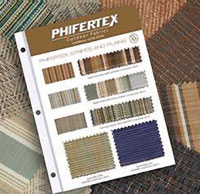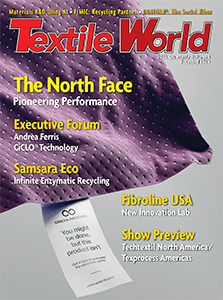MUTTENZ, Switzerland — February 17, 2016 — Clariant, a producer of specialty chemicals, announced full-year 2015 sales of CHF 5.807 billion compared to CHF 6.116 billion in 2014. This corresponds to a 3-percent growth in local currencies mainly driven by higher volumes. Due to the strong currency headwind, sales in Swiss francs decreased by 5 percent.
Growth in the Americas was good, with sales in local currencies up 19 % in Latin America and 4 percent in North America. Europe was 1 percent lower in local currencies impacted by a weaker end-market demand.
Lower growth came from the regions Asia/Pacific and Middle East & Africa. Sales in Asia/Pacific decreased by 1 percent in local currencies and were affected by a weak demand in China, which could not be compensated by the stronger demand of smaller economies in Asia. In the Middle East & Africa region, sales were down 6 percent year-on-year in local currencies.
The improved business performance stemmed primarily from higher growth in the Business Areas Care Chemicals, Catalysis and Natural Resources. In Care Chemicals sales in local currencies were up 4 percent, reaching CHF 1.445 billion. Adjusted for the portfolio change, on a like-for-like basis, growth in local currency was 6 percent year-on-year.
Sales in Catalysis rose by 4 percent in local currencies to CHF 704 million fueled by strong growth in Petrochemicals and Syngas. Sales growth year-on-year was impacted by the divestment of the Energy Storage business in February 2015. On a like-for-like basis sales in Catalysis have grown by 7 percent versus the previous year.
Despite the difficult market environment, sales in Natural Resources grew by 4 percent in local currencies reaching sales of CHF 1.217 billion primarily driven by the Oil and Mining Services business.
In Plastics & Coatings, sales in local currencies grew slightly by 1 percent to CHF 2.441 billion, despite the very challenging environment in Pigments resulting from the weak demand in Europe and China.
The gross margin of 30.8 percent was above the previous year’s level of 29.0 percent, benefiting from a positive mix effect, lower raw material costs and reclassification of costs to SG&A.
The EBITDA before exceptional items from continuing operations reached CHF 853 million up 8 percent in local currencies year-on-year resulting from a favorable volume mix.
The EBITDA b.e.i. margin increased to 14.7 percent by 50 basis points above the previous year’s level. The margin expansion came predominantly from the Business Areas Care Chemicals, Catalysis, as well as Natural Resources, which all significantly increased the EBITDA margins throughout 2015 compared to the previous year. In Plastics & Coatings, margins decreased due to the increasing challenging markets especially in Pigments throughout 2015.
Net income from continuing operations amounted to CHF 227 million comparable to CHF 235 million in the previous year. The lower tax expense could offset the higher financial costs as well as the lower gains from divestments versus 2014. The tax rate in 2015 was 24.3 percent, significantly lower than the previous year.
Operating cash flow rose significantly to CHF 502 million versus CHF 334 million year-on-year stemming from a sustainable net working capital management.
Net debt at CHF 1.312 billion was slightly higher compared to the CHF 1.263 billion recorded at year-end 2014.
Despite the more difficult economic environment as well as the significant appreciation of the Swiss franc, the solid performance allows the board of directors to propose to the Annual General Meeting a dividend of CHF 0.40 per share at the same level as in the previous year following an 11 percent dividend increase the year earlier. The distribution is proposed to be made from the capital contribution reserve that is exempt from Swiss withholding tax.
Fourth quarter 2015 – More margin expansion
In the fourth quarter of 2015, Clariant sales grew by 4 percent in local currency to CHF 1.526 billion. Due to the strong currency headwind, sales decreased by 4 % in Swiss francs. Volumes were up 4 percent compared to the previous year period.
In the fourth quarter, growth stemmed from the higher growth business areas, primarily Catalysis and Natural Resources. Care Chemicals reported sales of CHF 370 million up only 3 percent in local currencies impacted by a very weak de-icing business due to the mild weather in the fourth quarter. Catalysis sales in local currencies grew by 6 percent to CHF 241 million versus the previous year period. Sales in the Natural Resources Business Area were up 7 percent in local currencies to CHF 329 million, and sales in Plastics & Coatings were CHF 586 million, an increase of 3 percent in local currencies.
On a regional level, Latin America achieved double-digit growth in local currencies of 19 percent. North America increased sales by 2 percent in local currency, Europe was up 1 % in local currency, while Asia was down 1 percent versus the previous year.
The gross margin was higher year-on-year, at 30 percent compared to 28.8 percent thanks to a better mix effect, lower raw material costs and reclassification of costs to SG&A. The EBITDA margin before exceptional items expanded to 15.0 percent from 14.6 percent in the fourth quarter of 2014 primarily driven by Catalysis and Natural Resources.
Net income from continuing operations was CHF 24 million. This is above the previous year figure on a like-for-like basis adjusting for the one-time book gain from disposals relating to land sales in India in Q4 2014.
Operating cash flow amounted to CHF 306 million, compared to CHF 321 million year-on-year.
Outlook 2016 – to progress EBITDA margin and operating cash flow
Despite the difficult environment in 2015, Clariant could demonstrate its ability to sustainably improve its business performance by continuously launching new innovative products and solutions particularly in its higher margin Business Areas Care Chemicals, Catalysis and Natural Resources.
Clariant expects the uncertain environment, characterized by a high volatility in commodity prices and currencies, to further deteriorate. In emerging markets, we anticipate the economic environment to become more challenging and with increased volatility; we expect moderate growth in the United States, while growth in Europe is expected to remain stable but weak.
For 2016, in spite of the increasingly challenging economic environment, Clariant is confident to achieve growth in local currencies, as well as progression in operating cash flow and EBITDA margin before exceptional items.
Clariant confirms its mid-term target of reaching a position in the top tier of the specialty chemicals industry. This corresponds to an EBITDA margin before exceptional items in the range of 16-19 percent and a return on invested capital (ROIC) above the peer group average.
“Despite the challenging economic environment throughout the year, we continued to improve our performance again and have shown resilience,” said CEO Hariolf Kottmann. “Clariant has significantly improved its cash flow and expanded its EBITDA margin on the back of a good performance of the Business Areas Care Chemicals, Catalysis and Natural Resources. With this positive development we have been able to offset the negative impact of the stronger Swiss franc and deliver a net result comparable to 2014. For 2016, in spite of the economic environment anticipated to become even more demanding, we want to further progress in profitability and cash flow generation by continuously launching new innovative solutions particularly in our higher margin Business Areas.”
Posted February 18, 2016
Source: Clariant






